What is Speech Therapy?
The goal of Speech Therapy is to improve all aspects of communication, which includes comprehension, expression, sound production and the social use of language. Children on the autism spectrum often have difficulty making eye contact, which is essential to verbal communication. Therefore, Speech Therapy usually begins with exercises to improve eye contact before moving on to verbal and non-verbal communication. If a child is completely non-verbal, a therapist may employ sign language or a picture exchange system, which research suggests can increase all forms of communication, including verbal communication, in a child on the autism spectrum.
-
Christian's Speech Therapy Session with Christine Lenahan

Lack of communication is one of the warning signs of autism. In this clip, Christian is shown during a one on one speech therapy session with Christine Lenahan, a Speech Language Pathologist at his School. Ms. Lenehan explains how helping Christian communicate involves teaching him to use gestures, signs and eye contact as well as eye speech to express his need and wants. She compares Christian's development to that of his typically developing peers, who are shown using short phrases, eye contact and gestures, such as pointing, to communicate during a typical school day.
-
Working with PECS
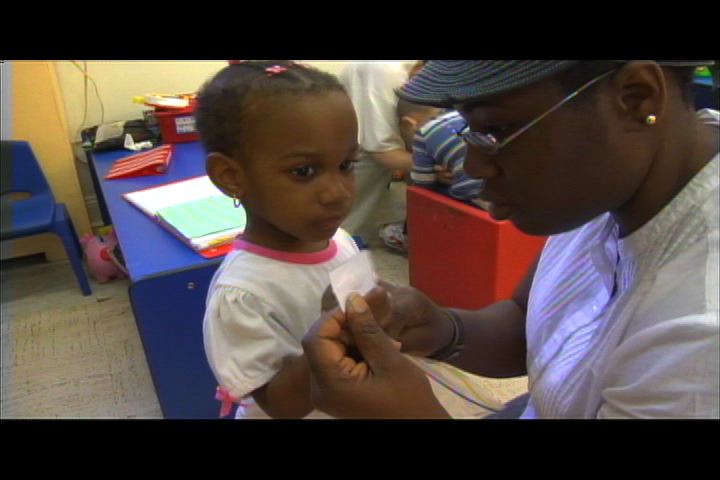
The following clip displays two therapists teaching a child with autism how to use PECS, the Picture Exchange Communication System. PECS is taught to children on the spectrum in order to provide them with an additional, nonverbal way to communicate, an essential tool for children whose spoken language is greatly delayed or absent. Leighdionne repeatedly practices using PECS to request a cracker until she needs less guidance from the therapist to complete the exercise.
-
Learning Receptive Language Skills
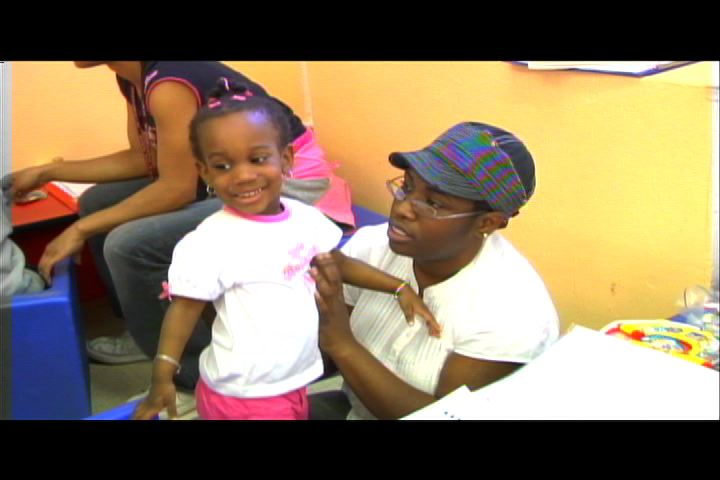
The following clip depicts a behavioral therapy program aimed at improving receptive language skills. In this particular segment, a young girl with autism is being taught to associate the phrase 'stand up' with the action of standing up, a movement that is initially directed by her therapist.
-
Working on Speech and Matching

In the following clip a speech therapist works on expressive and receptive language with Leighdionne, a young girl with ASD. Concurrently, the therapist encourages Leighdionne to make verbal approximations of words, and/or demonstrate an understanding of the words by matching and following simple commands. Leighdionne's need for better communication skills is evident at end the of clip when she becomes upset by the puzzle exercise, but is unable to express why.
-
Working on Expressive Language

As part of their intervention, speech therapists often provide a narrative and encourage children to use words or word approximations as they progress through their routine activities. In this way, the child learns that words play a meaninful role in their daily lives and functioning.
-
Recognition of Classmates Photos
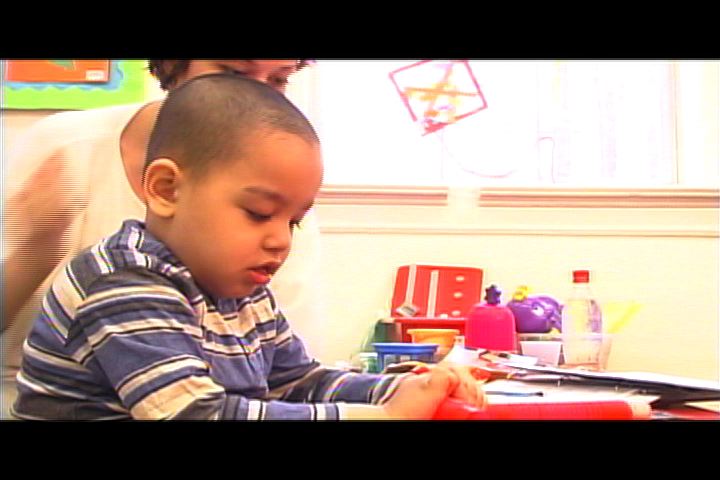
Children on the autism spectrum may often pay minimal attention to and have difficulty recognizing and reading faces. In this clip, a therapist helps Sajid, a young boy with autism, differentiate a picture of his own face from the faces of his classmates.
-
Working with PECS

In this video Antonio and his therapist are working on communication skills with the PECS, the picture exchange communication system. To get the book he wants, Antonio must use the PECS to request it from his therapist. The therapist requires that Antonio build a phrase ('I want book') with his pictures as he would with words as opposed to requesting with a single word or picture ('book'). In this way, Antonio learns the structure and meaning of language despite his difficulties with speech.
-
Speech Therapy; Recognition of Objects
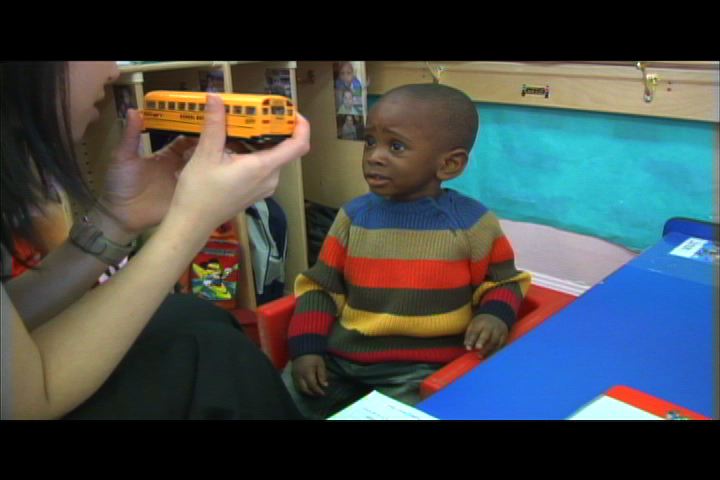
In this clip the therapist works with Jazmere on his expressive language by asking him to correclty label similar objects (e.g. car v. bus) and practice enunciating consonant and vowel combinations. She also requires Jazmere to use appropriate phrases to request his toys and juice.
-
Speech Therapy; Identifying Body Parts
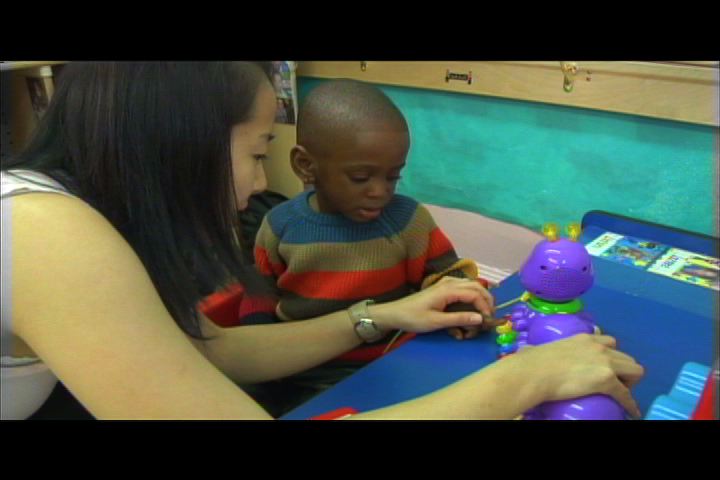
In the following clip, a therapist teaches Jazmere to identify his body parts as part of a speech therapy session. To confirm that Jazmere understands the meanings of these words as well as being able to repeat them, she requires that Jazmere touch each body part as he repeats it.
-
Working with PECS
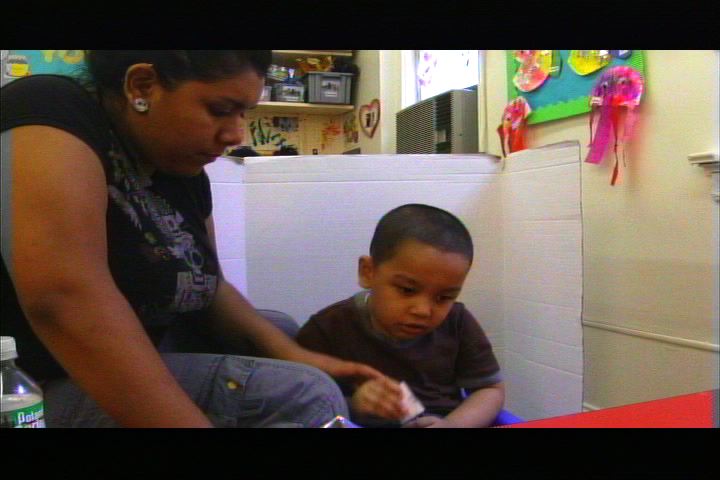
PECS, the picture exchange communication system, uses pictures to help nonverbal children request their wants and needs without the use of language. In this clip a therapist attempts to teach Sajid to use a PECS system. In addition to lacking speech, Sajid displays deficits in communication. He lacks not only the ability to speak, but also the motivation to communicate and understand that pictures or words can be used to represent different objects. Such pervasive communication deficits, as opposed to delayed language alone, are important indicators of ASD.
-
Speech Therapy; Recognition of Animals
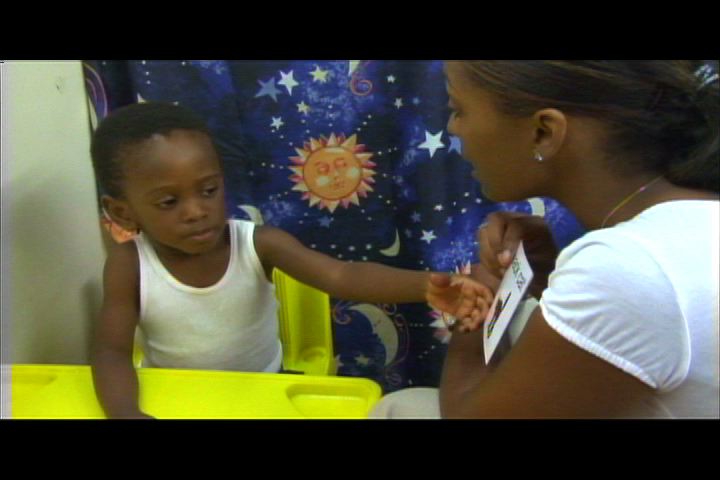
The following clip depicts Jazmere, a child with ASD, working with a therapist to expand his expressive vocabularly; his ability to speak as well as understand language. When Jazmere mislabels an animal, he demonstrates good engagement in the task, by repeating the correct word after his therapist. He also shows excellent mastery motivation, as he celebrates and shares his successes by gesturing (clapping hands) and smiling to communicate that he is proud of his accomplishments.
-
Speech Therapy with Flash Cards

The following clip portrays a speech therapy session with Jazmere, a young boy who has benefited substantially from ABA. Jazmere's progress is evident not only in his correct labelling of many action cards, but also in his use of many nonverbal cues to better communicate and engage with his therapist during the session. These cues include his frequent glances toward the therapist's face, his attempts to share pleasure and mastery of the task with her, his spontaneous attempts to engage her apart from the lesson content and his consistent use of pointing. This coordination of verbal and nonverbal communication reflects a clear change in Jazmere's motivation as well as his ability to communicate with others.
-
Pretend Play at Speech Therapy

In this video the speech therapist is playing house with Leighdionne. She uses the pretend game to not only teach and encourage her to speak certain words, but also to engage in and understand appropriate pretend play.
-
Learning How to Communicate

In this documentary clip, the principle of a special needs pre school explains how her students on the autism spectrum are taught to effectively communicate their wants and needs to others.
-
A Spontaneous Sentence
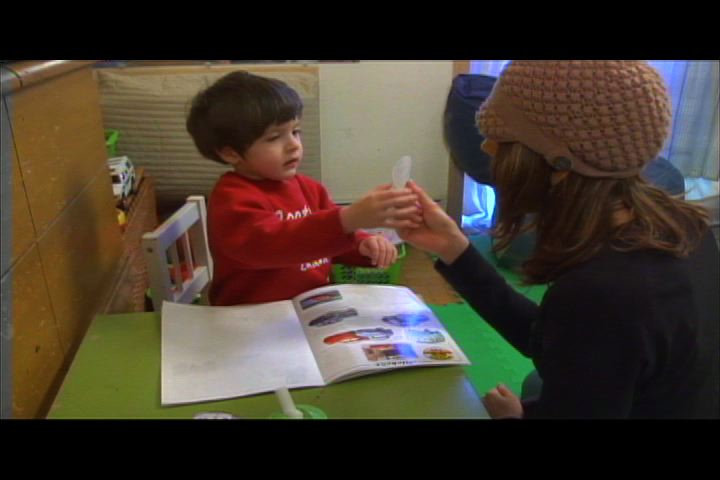
Lucas demonstrates the progress he has made by directing a spontaneous request "take out the sticker." to his therapist, Georgia. Rather than echoing Georgia's words or simply crying, Lucas is finally able to ask for what he wants.















